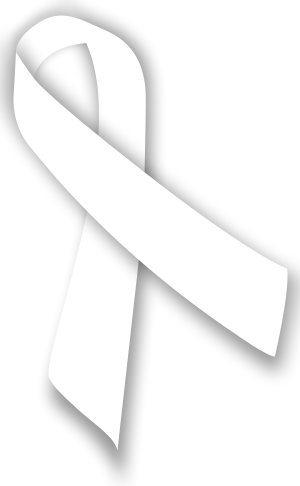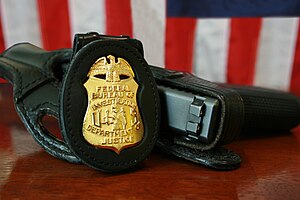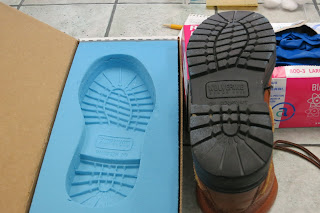| A white ribbon to commemorate the National Day of Remembrance and Action on Violence Against Women. Right-to-life Awareness. White Ribbon. Photo credit: Wikipedia) |
Today, I welcome back to my blog, Brynn, LMSW. This is the third installment in her series of blogs written to help writers to understand the perspective of the victim. In this blog she is writing from her position as a professional who deals with other victims. Brynn is happy to answer any of your questions. Please leave questions and comments for her below.
***
In December 2012, I earned my Master’s Degree in
Social Work. One of the requirements for my degree was an eight-hundred hours
internship in a single setting. I chose to work in the local police department
where I interned as a Victim’s Advocate. I worked predominately with survivors
of domestic violence, but I also worked with victims of other crimes:
robberies, child abuse, sexual assault, and so forth.
During my training, I received a manual (of sorts)
that explained the different types of crimes I might encounter. To my surprise,
they listed kidnapping! I am a survivor of a human trafficking ring. Strangers kidnapped
me and subjected to atrocities. And in a weird way, I was excited to see that the
police manual included at least a paragraph devoted to this horrific crime.
However, when I asked my social work supervisor how
I could best respond to an abduction victim, (I never mentioned to
her that I was a survivor) her response was that I
should simply not worry about it - kidnappings “never” happened.
Once I heard that, I knew immediately what I
wanted to do with my social work degree. I would focus on survivors of violent
crimes, especially victims of human trafficking.
| Office on Violence Against Women logo (Photo credit: Wikipedia) |
Surprisingly, now that I
am a LMSW working in the field, I rarely, if EVER, come across another
professional who has anything beyond basic knowledge of abduction and
trafficking.
I wrote about what it was like be a
survivor in past articles for Fiona Quinn’s blog, now I want to write this:
I despise it when people tell me, “I
understand.” I think, “Do you? Can you
really tell me you understand? If we reversed our positions -- you having gone
through the same thing that I did and me playing the role
of inviolate listener -- could you truly understand my feelings?” I hope your answer is no.
I hope it was no because even standing side by side
throughout the entire ordeal, you and I would still have experienced this
through different eyes, ears, mental filters, and emotions. Even when meeting another
victim of human trafficking, I cannot understand his or her experience
simply because I am not that other person. Each individual (and in the
same vein each fictional character) will experience a crime in a unique
way.
I frequently hear people say, “Wow! How did you
survive that?” To me, this phrase invalidates
my experience. It’s almost as if the questioner is daring me to prove that my
crime actually occurred. If you are writing a fictional response to a
victim’s disclosure (or you are expressing a personal response to a real-life
victim), I suggest thinking about ways to validate the crime victim’s
experience. As writers, after all, you are teaching your readers how to respond
if they encounter this experience in their own lives.
So perhaps, instead of having your characters ask,
“How did you survive?” try changing the wording around so that at the same time
as getting your question answered you are validating the experience of the
survivor (fictional or not). “It must have been difficult to go through that
experience. Can you tell me what you think helped during that ordeal?” Or
simply say, “How horrific. I’m so sorry. How can I help?”
Personally, the fact that someone can validate my
thoughts and feelings about my experience has helped tremendously. Validation
is key. I cannot stress enough how important this is! I have been able to
begin opening up because I feel as though people believe me.
In writing, please take a moment to consider the
character not just as a victim but as a survivor. Validating the feelings of
that character/survivor (their anger, denial, and depression) can help to
portray adequate therapeutic relationships that can help the victim
move forward. Or alternatively, with an invalidating response, you can harm the
victim's progress.
Let me offer an example for how you might accomplish
a validation in your fictional piece:
During my ordeal, one of the ways my kidnappers
punished me was by burying me alive. I distinctly remember the dirt, the smell,
the worms… all of it. I have
never been able to talk about that aspect of my abduction. It is simply
too painful.
One night, I ended up in the ICU. I was unable to
breathe. My condition mystified the doctors. Finally, a lung specialist came in
and asked a series of questions. One of
the questions was, “Have you ever been exposed to large quantities of dirt?” I
hesitated for a moment before telling him about the time that the kidnappers
had buried me alive. The lung specialist did not pause. He did not question me.
The results of my medical tests validated my experience. The doctor was able to
tell me that my story corroborated my medical test results, and his diagnosis
made sense.
Even if your character survives something that reads
as crazy or unbelievable, understand that people survive the crazy and
unbelievable every day. After all, I survived -- anything is possible.
Fiona Quinn adds: If you want to read a series that
includes the survivors of sexual abuse and the appropriate way to hear/validate
their experiences, I suggest Sylvia Day’s books Bared to You and Reflected
in You. (Heads up - both have an erotic component) Sylvia Day does an
excellent job of dealing with her characters in a sound psychological way,
and she presents an excellent template for other authors to follow. As an MS in
Counseling, I highly suggest these books. As a counselor, I sincerely hope that
authors can help to teach appropriate victim response through their carefully
crafted writing. And as an author dealing with characters, just as in real
life, I understand that sometimes this is a tight-rope walk.
Reflected in You on AmazonBared to You on Amazon





























 \
\






